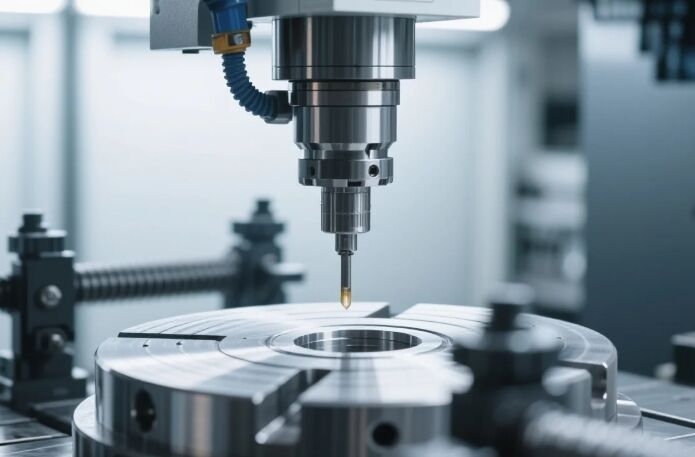AI in CNC machining: Is the future of intelligent production here?
Every technological revolution in the manufacturing industry is accompanied by a leap in efficiency and precision. Today, artificial intelligence (AI) is deeply integrated into the field of CNC (computer numerical control) machining as a "digital brain", driving the evolution of traditional machine tools from "mechanical executors" to "intelligent decision makers". This change not only makes production more efficient, but also makes "millimeter-level precision" and "zero-defect manufacturing" possible.
A. How does AI make CNC machine tools "learn to think"?
1. Predictive maintenance: Say goodbye to the era of downtime
In the past, machine tool failures often brought economic losses due to unexpected downtime. Today, AI uses sensors to monitor spindle vibration, temperature, current and other data in real time, and combined with machine learning algorithms, it can predict bearing wear or tool life in advance. For example, a high-speed milling machine in Germany monitors vibration values through acceleration sensors. If it exceeds the safety threshold, it will automatically shut down to avoid equipment damage and reduce maintenance costs by 40%.
- Self-optimization of process parameters: from "relying on experience" to "relying on data"
Traditional processing relies on manual setting of parameters, while AI can analyze historical processing data and dynamically adjust parameters such as spindle speed and feed rate. For example, Siemens optimizes automotive parts processing through Digital Twin technology, increasing efficiency by 20% and accuracy by 10%.
3. Real-time quality monitoring: leaving no place for errors
With the help of industrial vision and laser scanning, AI can detect the size of workpieces in real time during processing. The team of Zibo Vocational and Technical University developed a "structured light scanning + AI vision" system that completes full-size inspection of complex curved parts within 3 minutes, with an error rate reduced from 0.12% to 0.008%.
B.The "AI counterattack" of old equipment
Many companies face the high cost problem of equipment upgrades, and AI technology injects new life into old machine tools:
- No need for disassembly and modification: Through multimodal sensors and edge computing, old machine tools can compensate for processing errors in real time. For example, an aviation company shortened the 72-hour assembly process to 5.6 hours, with an accuracy of ±0.005 mm, and the transformation cost was only 1/3 of the traditional solution.
- Adaptive processing: AI algorithms automatically adjust cutting paths according to material properties, and even complex parts can achieve "first-time pass".
C. "Neural Network" of Smart Factory
The integration of AI and Industrial Internet of Things (IIoT) makes CNC machine tools no longer information islands:
- Edge computing: Data is processed in real time on the machine tool side to reduce cloud latency. For example, vibration analysis is completed locally, and the response speed is improved to milliseconds.
- Global collaboration: After multiple machine tools are connected to the network, the central system can dynamically assign tasks. Japan's Mazak's "information tower" technology allows machine tools to seamlessly connect with production plans, and remote experts can directly intervene in repairs when failures occur.
D. What will the factory of the future look like?
1. Smarter "self-evolving" machine tools: AI will combine reinforcement learning to allow machine tools to autonomously optimize processing strategies and even learn from mistakes.
2. New standards for green manufacturing: Through energy consumption optimization and dry cutting technology, AI helps reduce energy consumption and coolant pollution by 30%.
3. Zero threshold automation: CNC systems with open interfaces allow companies to customize functions, and small and medium-sized enterprises can also achieve intelligence at low cost.
Intelligent production is no longer a "multiple choice question"
From predictive maintenance to real-time optimization, AI is reshaping every aspect of CNC processing. Data shows that the global intelligent CNC market will exceed US$140 billion in 2029, and Asia will become the main growth force. For enterprises, embracing AI is not only an efficiency competition, but also a battle for survival. Those factories that take the lead in upgrading machine tools to "AI life forms" are destined to seize the initiative in the wave of Industry 4.0.


